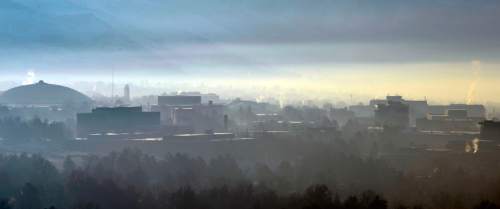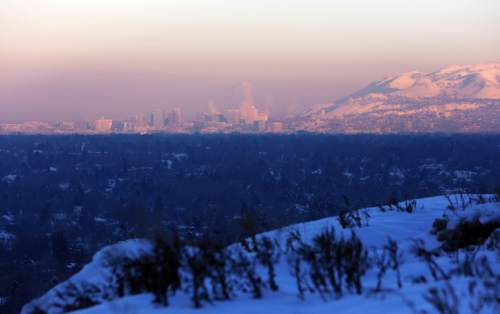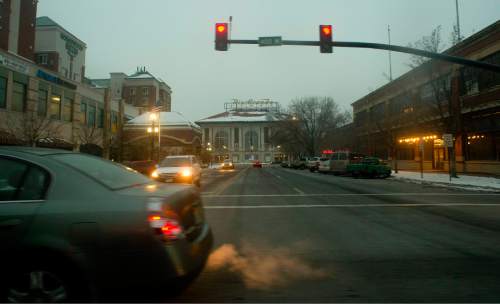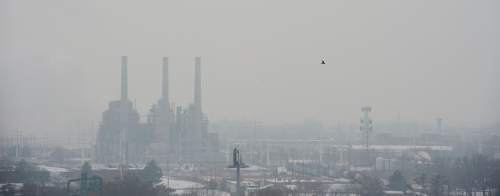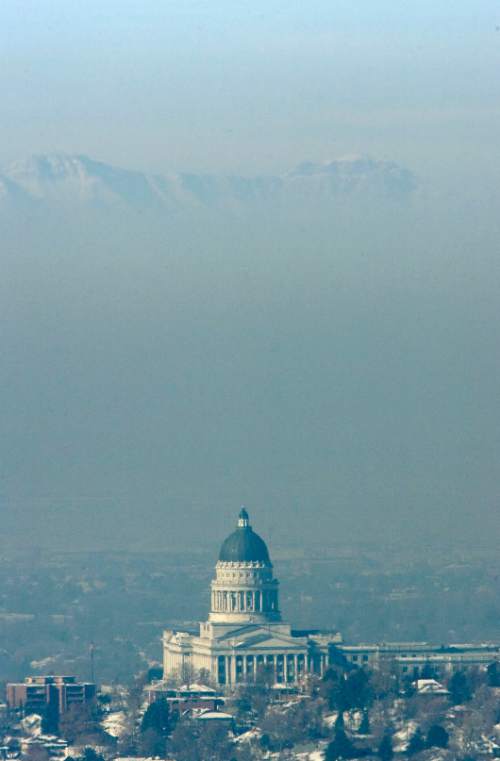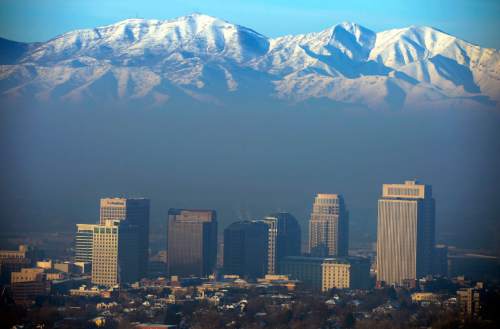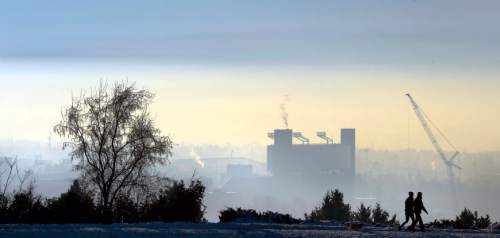This is an archived article that was published on sltrib.com in 2014, and information in the article may be outdated. It is provided only for personal research purposes and may not be reprinted.
Homeowners and renters who use wood-burning stoves or fireplaces in Salt Lake County next winter could face fines if they burn on what the state considers voluntary no-burn days.
A new regulation proposed by the Salt Lake County Health Department would take a more restrictive approach than the Utah Division of Air Quality (DAQ), banning burning on all but the clearest days.
"All of us who live through the inversions know how bad it can get," said Arlyn Bradshaw, the Salt Lake County Council's representative on the health board. "This is one step we can take to improve that air quality."
The idea, Bradshaw said, is to keep the air "slightly cleaner, slightly longer," as pollution builds during winter inversions.
The county health department's board decided last week to start taking public comment, and scheduled a Dec. 11 public hearing on the regulation, No. 35. Board members plan to vote at their January meeting, and the regulation likely would take effect in January 2016.
Last winter, Salt Lake County had 18 voluntary no-burn days and 31 mandatory no-burn days. Under the new rule, burning would have been prohibited nearly 50 days.
Residents who have no alternative way of heating their homes would be exempted, although the state plans to hunt, again, for such homes so they can be converted to natural gas or other furnaces with financial help from the state.
At present, only a couple dozen homes are on the registry, which covers seven counties, but the registry likely will be reopened soon for more listings. Only one home now on the list uses coal as a sole source for heat, said Joel Karmazyn, an environmental scientist with DAQ.
The Salt Lake County Health Department regulation applies to coal-burning as well as wood fires, and would ban all outdoor fires — including bonfires, patio pit and charcoal grill fires — during days that the state designates as voluntary or mandatory no-burn days in winter. Such days do not track precisely with green, yellow and red days, because the state issues its no-burn orders based on forecasted, not current, pollution levels.
The regulation's biggest effect will be on the tens of thousands of wood stove and fireplace owners who have other ways to heat their homes.
"This will help our community understand the impact that voluntary wood-burning has on our air quality," said Gary Edwards, executive director of the health department. "This is one of those things we can voluntarily do and it doesn't impact our ability to make a living or get to the grocery store."
A University of Utah study published last year found that wood smoke and cooking grill emissions account for 38 percent of emissions, which is higher than gasoline and diesel fuel engines, which account for 37 percent.
The rule would give the health department the right to inspect homes, investigate complaints and issue notices of violation. But the health department will focus on educating residents during the first year, Edwards said.
Fines likely would be assessed only on repeat offenders, he said. Any fine would follow state law, which allows for penalties up to $299 per day.
The Environmental Protection Agency's National Ambient Air Quality Standards require that fine particulates do not exceed 35 micrograms per cubic liter of air in a 24-hour period. A five-county area of Utah has been out of "attainment" for that standard since 2009. As a result, Utah is at risk of losing transportation funding.
Modeling by the DAQ shows that if 85 percent of Salt Lake County's wood-burners complied on no-burn days, the county could reach 37.2 micrograms of fine particulates. Full compliance could reduce pollution another 1.5 micrograms, which is significant, said DAQ's Kamarzyn.
It's difficult to fully predict the impact of the rule change, because it depends on the timing of a ban, he said. Pollution builds gradually, and then spikes.
But the idea of cutting off wood-burning earlier, when the state issues its voluntary no-burn advisories, is sound, he said.
"It has a substantial impact on the model," Kamarzyn said Friday.
Edwards said the regulation would be in effect only from Dec. 1 to March 1 each year.
"All of this is about trying to meet those EPA standards … because they are health-based standards," he said.
Twitter: @KristenMoulton —
Public comment
I A public hearing on the proposed Salt Lake County Health Department regulation banning solid-fuel burning earlier during winter inversions will be at 5 p.m. Dec. 11 at the department's Environmental Health Building, 788 E. Woodoak Lane (5380 South), Murray. Comments also can be emailed to SLCoHealthEH@slco.org or mailed to Salt Lake County Health Department, Environmental Health Division, Attn: Regulation 35 Comments, 788 East Woodoak Lane Murray, Utah 84107



